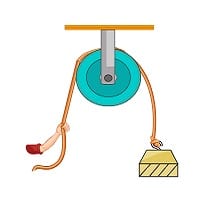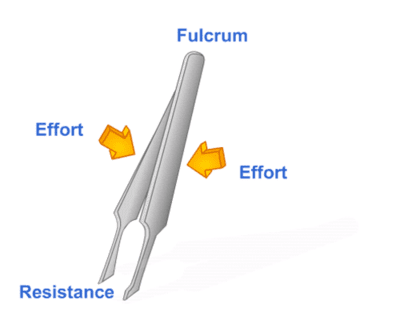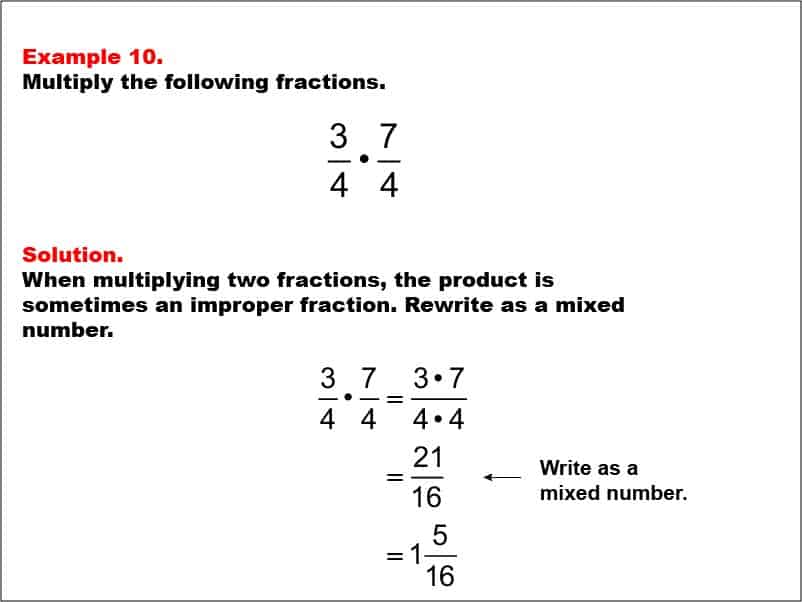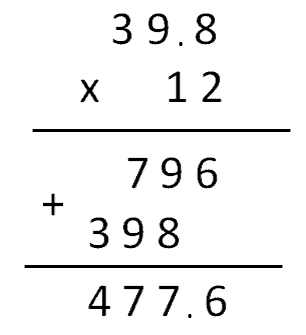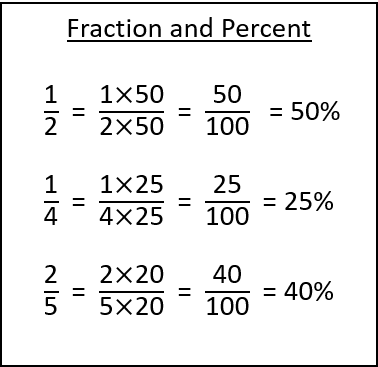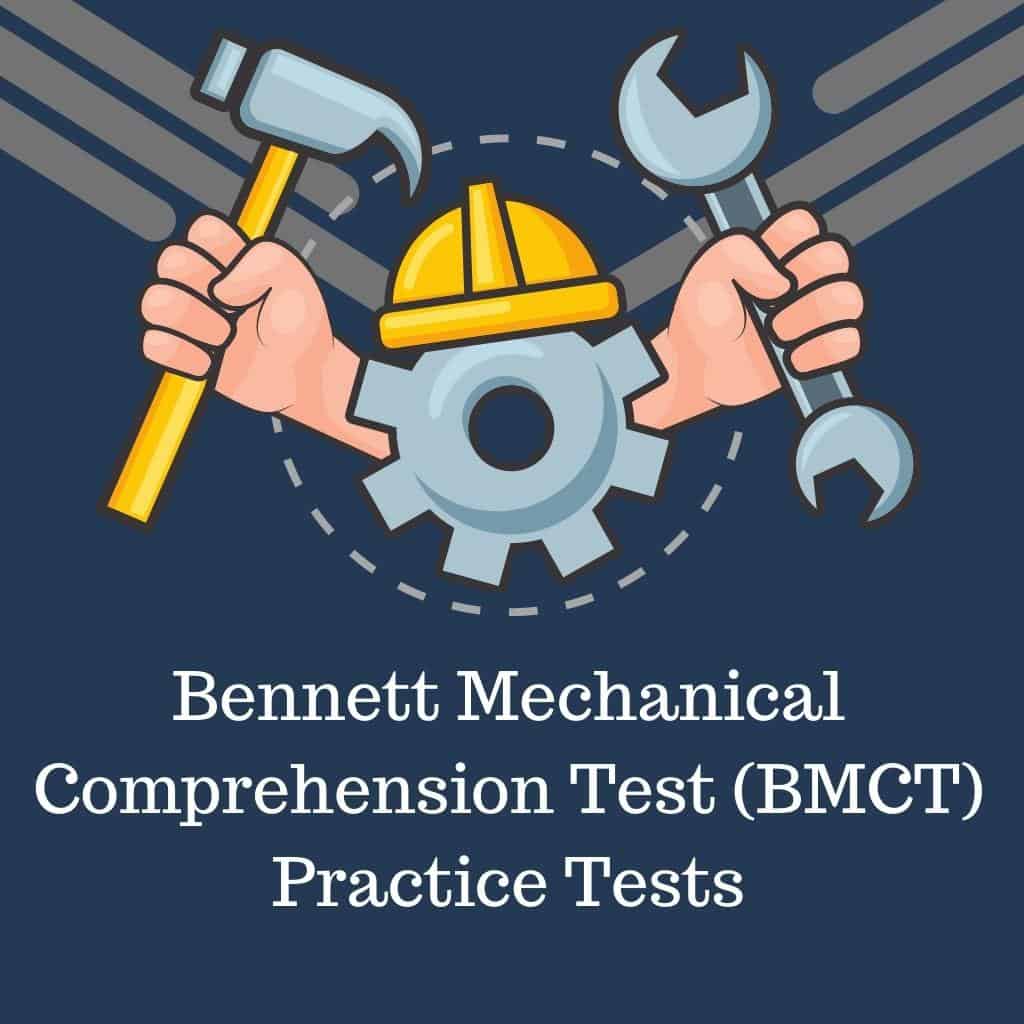The MASS (Power Plant Maintenance Positions Selection System) aptitude test is a standardized assessment designed to evaluate the knowledge and skills required for entry-level positions in power plant maintenance. It is used by various utility companies and power plant operators to select candidates who demonstrate the aptitude necessary to succeed in these roles. The test measures your mechanical concepts, reading comprehension, mathematical usage, and spatial ability, which are essential skills for power plant maintenance workers.
The primary purpose of the MASS test is to ensure that candidates possess the necessary skills and aptitude to perform the tasks associated with power plant maintenance positions. The test serves as a screening tool for employers to identify candidates who demonstrate the potential to excel in these roles, reducing training costs and increasing employee retention.
The MASS test consists of multiple-choice questions and is usually administered on a computer. The test is timed, with a total duration of approximately two hours. The test is divided into four main sections, each focusing on a specific skill set:
- Mechanical Concepts: This section tests your understanding of basic mechanical principles, such as pulleys, levers, gears, force and motion, hydraulics, and pneumatics. Questions may require you to analyze diagrams or identify mechanical advantages in given scenarios.
- Reading Comprehension: This section assesses your ability to read and understand written passages, as well as answer questions based on the information provided. Passages may cover various topics, including technical and non-technical subjects. Questions may involve identifying main ideas, drawing conclusions, or making inferences.
- Mathematical Usage: This section evaluates your knowledge of basic mathematical concepts, such as arithmetic operations, fractions, decimals, percentages, ratios, proportions, and basic algebra and geometry. Questions may involve solving word problems, making calculations, or interpreting data.
- Spatial Ability: This section measures your ability to visualize objects in two and three dimensions, manipulate and transform objects, and recognize patterns. Questions may involve identifying the correct orientation of objects, comparing shapes, or determining how objects fit together.
The MASS test is scored on a scale, and each section's score is combined to form a composite score. The minimum passing score varies depending on the employer and the specific position you are applying for. It is important to check the requirements of the company you are applying to, as well as the desired position, to understand the specific scoring criteria.
Your test results will typically be provided to both you and the employer. Some employers may use the scores to rank candidates or as a part of their hiring process. It is essential to review your scores and identify areas for improvement, especially if you plan to retake the test or apply for other positions.
Mechanical Concepts
Introduction to mechanical concepts
Mechanical concepts are fundamental principles that govern the behavior of machines and mechanical systems. A strong understanding of these concepts is crucial for power plant maintenance workers, as they frequently encounter mechanical systems and components in their daily work. In this lesson, we will cover the essential mechanical concepts, including pulleys, levers, gears, force and motion, hydraulics, pneumatics, and principles of electricity and magnetism.
Pulleys, levers, and gears
Pulleys: A pulley is a simple machine that consists of a wheel with a grooved rim and a rope or cable that runs along the groove. Pulleys are used to change the direction and magnitude of a force. There are three types of pulleys: fixed pulleys, movable pulleys, and compound pulleys. Fixed pulleys only change the direction of the force, while movable and compound pulleys change both the direction and magnitude of the force. The mechanical advantage of a pulley system is equal to the number of supporting ropes.
Levers: A lever is a simple machine that consists of a rigid bar that pivots around a fixed point called a fulcrum. Levers are used to amplify an input force or to change the direction of the force. There are three classes of levers, depending on the relative positions of the fulcrum, input force (effort), and output force (load): first-class levers, second-class levers, and third-class levers. The mechanical advantage of a lever is the ratio of the input arm length to the output arm length.
Gears: Gears are toothed wheels that mesh together to transmit motion and force between two rotating shafts. The size and number of teeth on the gears determine the gear ratio, which is the ratio of the input speed (driver gear) to the output speed (driven gear). When gears mesh together, the driver gear's rotation causes the driven gear to rotate in the opposite direction. Gears can be used to change the speed, torque, and direction of a mechanical system.
Force and motion
Force: A force is a push or pull that causes an object to change its motion, direction, or shape. Forces are vector quantities, meaning they have both a magnitude and a direction. Common types of forces include gravitational force, frictional force, tension force, and normal force.
Newton's Laws of Motion: There are three fundamental laws of motion, formulated by Sir Isaac Newton, that describe the relationship between the motion of an object and the forces acting on it:
- First Law (Inertia): An object at rest stays at rest, and an object in motion stays in motion with a constant velocity, unless acted upon by an external force.
- Second Law (F = ma): The acceleration of an object is directly proportional to the net force acting on it and inversely proportional to its mass.
- Third Law (Action and Reaction): For every action, there is an equal and opposite reaction.
Hydraulics and pneumatics
Hydraulics: Hydraulics refers to the transmission of power and motion using incompressible fluids, such as oil or water. Hydraulic systems use the principle of Pascal's Law, which states that when an external pressure is applied to an enclosed fluid, the pressure is transmitted uniformly throughout the fluid. In a hydraulic system, a small input force applied to a small piston can create a much larger output force on a larger piston. This amplification of force is due to the difference in the areas of the two pistons. The mechanical advantage of a hydraulic system is the ratio of the output force to the input force.
Pneumatics: Pneumatics refers to the transmission of power and motion using compressible gases, such as air. Pneumatic systems operate on principles similar to hydraulics but use compressed air or other gases as the working fluid. Pneumatic systems often include components like compressors, air tanks, valves, and actuators (e.g., cylinders and motors). While pneumatic systems are generally less powerful than hydraulic systems, they are cleaner, lighter, and more adaptable to various applications.
Principles of electricity and magnetism
While not strictly mechanical concepts, a basic understanding of electricity and magnetism principles is essential for power plant maintenance workers, as electrical systems and magnetic forces are closely related to the operation of many mechanical systems in power plants.
Electricity: Electricity is the flow of electric charge, typically carried by electrons, through a conductor. The three fundamental electrical quantities are voltage (the electric potential difference between two points), current (the flow of electric charge), and resistance (the opposition to the flow of current). Ohm's Law relates these quantities: Voltage = Current x Resistance (V = IR).
Magnetism: Magnetism is the force exerted by magnets and magnetic materials. Magnets have two poles (north and south), and opposite poles attract each other, while like poles repel each other. The magnetic force is caused by the motion of electric charges, such as the electrons in a current-carrying wire. Electromagnetic devices, like motors and generators, use the interaction between electric currents and magnetic fields to convert electrical energy into mechanical energy or vice versa.
By gaining a strong understanding of these mechanical concepts and principles, you will be better prepared for the MASS test's Mechanical Concepts section and for working in power plant maintenance roles. Remember to practice solving problems and analyzing mechanical systems to reinforce your understanding of these concepts.
Looking for prep material?
Practicing is a proven way to score higher on your MASS Aptitude Test. Find full prep packages to ace your assessment!
Reading Comprehension
The importance of reading comprehension
Reading comprehension is the ability to read and understand written text, extract relevant information, and draw conclusions based on the material. This skill is crucial for power plant maintenance workers, as they often need to read and interpret technical documents, manuals, and safety procedures. The MASS test's Reading Comprehension section assesses your ability to comprehend written passages and answer questions based on the information provided.
Types of reading passages
In the MASS test, you may encounter various types of reading passages, including:
- Technical passages: These passages may cover topics related to mechanical systems, electrical systems, safety protocols, or other industry-specific subjects. They often include complex terminology and concepts.
- Non-technical passages: These passages may discuss general topics unrelated to the power plant maintenance industry, such as history, science, or current events. They typically use everyday language and concepts.
Strategies for reading passages effectively
To improve your reading comprehension skills, consider the following strategies:
- Preview the passage: Before reading, quickly skim the passage to get a sense of the topic, structure, and main ideas. This will help you to focus your attention and set the context for the passage.
- Read actively: Engage with the text by asking questions, making predictions, and summarizing key points as you read. This will help you to retain information and identify important details.
- Take notes: Jot down key terms, concepts, and main ideas as you read. This will help you to organize your thoughts and make it easier to refer back to the passage when answering questions.
- Identify the main idea: Determine the central theme or purpose of the passage. This will help you to understand the overall message and how the details relate to it.
- Break down complex sentences: If you encounter a difficult sentence, break it down into smaller parts and try to understand each part separately. This will make it easier to grasp the meaning of the entire sentence.
Answering questions based on reading passages
When answering questions related to a passage, keep the following tips in mind:
- Refer back to the passage: Always refer back to the passage when answering questions, even if you think you remember the information. This will help you to ensure accuracy and avoid making assumptions.
- Eliminate incorrect answers: Cross out answer choices that are clearly wrong or irrelevant. This will help you to narrow down your options and make an educated guess if necessary.
- Answer specific questions first: Tackle questions that ask about specific details or facts from the passage before moving on to more general or inferential questions. This will help you to build your understanding of the passage and make it easier to answer more complex questions.
- Use context clues: If you encounter an unfamiliar term or concept, use the surrounding text to help you infer its meaning. Look for synonyms, antonyms, examples, or explanations that can provide clues about the unfamiliar term.
- Manage your time: Keep track of the time and allocate an appropriate amount of time for each question. Don't spend too much time on a single question; instead, move on and return to it later if you have time.
Practice reading passages and questions
To prepare for the Reading Comprehension section of the MASS test, practice reading a variety of technical and non-technical passages and answering related questions. Focus on applying the strategies and tips discussed in this lesson to improve your comprehension and efficiency. Regular practice will help you to become more comfortable with the test format and build your confidence in your reading comprehension abilities.
Looking for prep material?
Practicing is a proven way to score higher on your MASS Aptitude Test. Find full prep packages to ace your assessment!
Mathematical Usage
Basic mathematical operations
The four basic mathematical operations are addition, subtraction, multiplication, and division. These operations form the foundation for more advanced mathematical concepts. To improve your proficiency in these basic operations, practice mental arithmetic, as well as solving problems using a pen and paper or calculator when necessary.
Fractions, decimals, and percentages
Fractions: A fraction represents a part of a whole and consists of a numerator (the top number) and a denominator (the bottom number). When adding or subtracting fractions, you need a common denominator. To multiply fractions, multiply the numerators and denominators separately. To divide fractions, multiply the first fraction by the reciprocal of the second fraction.
Decimals: Decimals represent numbers using a base-10 system with a decimal point separating the whole number part and the fractional part. To add or subtract decimals, align the decimal points and perform the operation as usual. To multiply decimals, multiply the numbers as if they were whole numbers and then place the decimal point in the product. To divide decimals, move the decimal point in both the divisor and dividend, making the divisor a whole number, and then perform the division.
Percentages: Percentages represent a proportion of 100. To convert a percentage to a decimal, divide the percentage by 100. To convert a decimal to a percentage, multiply the decimal by 100. When solving problems involving percentages, it is often helpful to convert percentages to decimals or fractions.
Ratios and proportions
- Ratios: A ratio is a comparison of two quantities, usually expressed as a fraction. Ratios can be written using a colon (e.g., 3:4) or as a fraction (e.g., 3/4). To simplify a ratio, divide both terms by their greatest common divisor.
- Proportions: A proportion is an equation that shows two ratios are equivalent (e.g., 3/4 = 6/8). To solve proportions, use the cross-multiplication method: multiply the numerator of one ratio by the denominator of the other, and then set the products equal to each other.
Basic algebra and geometry concepts
- Algebra: Basic algebra involves using variables (usually represented by letters) to represent unknown quantities. Common algebraic operations include solving linear equations, working with expressions, and understanding properties of exponents. To solve a linear equation, isolate the variable by performing inverse operations (e.g., addition and subtraction are inverses, as are multiplication and division).
- Geometry: Basic geometry concepts include understanding points, lines, angles, and shapes, as well as calculating perimeters, areas, and volumes of various shapes. Familiarize yourself with the formulas for the area and perimeter of common shapes, such as rectangles, triangles, and circles, and the volume of 3D shapes like cubes, cylinders, and spheres.
Word problems and their solutions
Word problems require you to apply mathematical concepts to real-life situations. To solve word problems, follow these steps:
- Read the problem carefully and identify the relevant information.
- Determine the operation(s) required to solve the problem.
- Set up an equation or expression using variables to represent the unknown quantities.
- Solve the equation or expression and find the solution.
- Check your answer to ensure it is reasonable and accurate.
By practicing and mastering these mathematical concepts, you will be better prepared for the Mathematical Usage section of the MASS test.
Looking for prep material?
Practicing is a proven way to score higher on your MASS Aptitude Test. Find full prep packages to ace your assessment!
Spatial Ability
Understanding spatial ability
Spatial ability refers to the capacity to understand, reason, and manipulate spatial relationships, both in two-dimensional (2D) and three-dimensional (3D) spaces. This skill is crucial for power plant maintenance workers, as they often need to interpret diagrams, read blueprints, and visualize the arrangement of components within a system. The MASS test's Spatial Ability section assesses your ability to comprehend and manipulate spatial information.
Visualizing objects in 2D and 3D
Visualizing objects involves creating mental images of shapes, patterns, and configurations. This skill helps you to understand the layout and orientation of objects and their relationships to one another.
- 2D visualization: This involves interpreting and analyzing flat images or diagrams, such as blueprints, floor plans, or schematics. Practice sketching and interpreting 2D shapes and patterns to improve this skill.
- 3D visualization: This involves imagining objects and their relationships in three dimensions, as well as understanding how 2D images represent 3D objects. To improve your 3D visualization skills, practice building and analyzing 3D models, either physically or using computer software.
Manipulating and transforming objects
Manipulating and transforming objects involves mentally rotating, reflecting, or scaling shapes and patterns. This skill helps you to understand how objects may change or interact under different conditions.
- Mental rotation: This involves imagining an object rotating around a specific axis. To practice mental rotation, try to visualize objects from different perspectives, or use puzzles that require you to rotate pieces to fit them together.
- Reflection: This involves imagining an object mirrored across a specific plane. To practice reflection, try to visualize objects flipped horizontally or vertically, or use puzzles that require you to match reflected shapes.
- Scaling: This involves imagining an object resized proportionally in all dimensions. To practice scaling, try to visualize objects at different sizes or use puzzles that require you to compare and match objects of varying scales.
Pattern recognition and analysis
Pattern recognition involves identifying and understanding relationships between shapes, patterns, and configurations. This skill helps you to analyze complex systems, predict outcomes, and solve problems.
- Identifying patterns: Practice recognizing patterns in shapes, numbers, and sequences. Look for regularities, repetitions, or symmetries that can help you to understand the underlying structure.
- Analyzing patterns: Once you have identified a pattern, analyze it to determine its properties, rules, or relationships. Use this information to make predictions, solve problems, or complete incomplete patterns.
By practicing and mastering these spatial abilities, you will be better prepared for the Spatial Ability section of the MASS test and for working in power plant maintenance roles. Regular practice with spatial puzzles, diagrams, and exercises will help you to develop your spatial reasoning skills and improve your overall performance on the test.
Looking for prep material?
Practicing is a proven way to score higher on your MASS Aptitude Test. Find full prep packages to ace your assessment!
Test-taking Strategies and Time Management
Effective time management is essential for success on the MASS test, as it allows you to allocate sufficient time for each question, minimize stress, and maximize your overall score. By managing your time effectively, you can ensure that you complete all sections of the test without feeling rushed or overwhelmed.
Prioritizing questions and sections
To make the most of your time during the test, prioritize questions and sections based on the following factors:
- Difficulty: Start with questions and sections you find easier and save more challenging ones for later. This will help you build confidence and momentum as you progress through the test.
- Point value: Focus on questions with higher point values or those that contribute more to your overall score. This will maximize your potential points earned.
- Time required: Complete questions that take less time to answer first, and save more time-consuming questions for later. This will ensure that you answer as many questions as possible within the allotted time.
Techniques for answering questions efficiently
To answer questions efficiently, consider the following strategies:
- Skim the question: Quickly read the question to get a general understanding of what is being asked. This will help you determine the best approach to answer it.
- Eliminate incorrect answers: For multiple-choice questions, eliminate clearly incorrect or irrelevant answer choices. This will narrow down your options and improve your chances of selecting the correct answer.
- Use educated guesses: If you're unsure of the correct answer, use the process of elimination and any relevant knowledge to make an educated guess. It's better to guess than to leave a question unanswered, as there is no penalty for guessing on the MASS test.
- Answer specific questions first: Tackle questions that ask about specific details or facts before moving on to more general or inferential questions. This will help you build your understanding of the material and make it easier to answer more complex questions.
- Keep an eye on the clock: Regularly check the time and adjust your pace accordingly. If you find yourself spending too much time on a particular question, move on and return to it later if time permits.
Managing test anxiety and staying focused
Test anxiety can negatively impact your performance on the MASS test. To manage test anxiety and stay focused, consider the following strategies:
- Practice relaxation techniques: Deep breathing, progressive muscle relaxation, or visualization can help reduce stress and anxiety during the test.
- Maintain a positive mindset: Remind yourself of your preparation and believe in your ability to succeed. Replace negative thoughts with positive affirmations.
- Take breaks: If permitted, take short breaks during the test to relax and refocus. Use this time to stretch, breathe, or drink water.
- Focus on the task at hand: Concentrate on the current question or section and avoid thinking about previous or upcoming questions. This will help you stay present and engaged with the material.
General test-taking tips and best practices
To ensure success on the MASS test, follow these general test-taking tips and best practices:
- Prepare adequately: Familiarize yourself with the test format, content, and strategies through study guides, practice tests, and review materials.
- Get a good night's sleep: Ensure you are well-rested before the test to maximize focus, concentration, and memory retention.
- Eat a balanced meal: Consume a healthy meal before the test to provide your body with the energy and nutrients it needs to perform optimally.
- Arrive early: Arrive at the testing location early to avoid last-minute stress and to give yourself time to acclimate to the environment.
- Bring necessary materials: Ensure you have all required materials, such as identification, pencils, erasers, and a calculator (if allowed), to avoid any disruptions or delays during the test.
Read the instructions carefully: Before starting each section, read the instructions thoroughly to ensure you understand the requirements and expectations. Pay attention to any specific directions, such as the number of answer choices to select or the order in which to complete sections.
Pace yourself: Be mindful of the time allocated for each section and pace yourself accordingly. Break down the time available by the number of questions to determine how much time you can spend on each question. Monitor your progress and adjust your pace as needed.
Review your answers: If time permits, review your answers to ensure they are complete and accurate. Double-check your calculations and confirm that you have answered all questions to the best of your ability.
By implementing these test-taking strategies and time management techniques, you will be better equipped to handle the MASS test efficiently and effectively. Remember, practice and preparation are key to success, so invest time in honing your skills and building your confidence before taking the exam.
Looking for prep material?
Practicing is a proven way to score higher on your MASS Aptitude Test. Find full prep packages to ace your assessment!
Final Preparations and Test Day Tips
Reviewing key concepts and strategies
As the test day approaches, it is essential to review the key concepts and strategies you have learned throughout your preparation. Focus on the following areas:
- Revisit difficult topics: Review any concepts or strategies you found challenging during your preparation. This will help reinforce your understanding and boost your confidence.
- Practice tests: Take timed practice tests to gauge your progress and identify any remaining areas of weakness. This will also help familiarize you with the test format and time constraints.
- Review notes and summaries: Go through your notes and summaries of key concepts, formulas, and strategies. This will help consolidate your knowledge and make it easier to recall on test day.
Mental and physical preparations for test day
To perform at your best on test day, ensure that you are mentally and physically prepared:
- Get adequate sleep: Aim for at least 7-8 hours of sleep each night in the days leading up to the test. A well-rested mind will be more focused and better able to recall information.
- Eat a balanced diet: In the days before the test, maintain a balanced diet to ensure your body has the nutrients it needs for optimal performance.
- Exercise: Engage in regular physical activity to reduce stress, improve mood, and enhance cognitive function.
- Practice relaxation techniques: Use deep breathing, visualization, or meditation to manage test anxiety and stay calm on test day.
- Develop a test-day routine: Plan your test day routine in advance, including what you will eat, wear, and bring with you. This will help minimize stress and uncertainty on test day.
What to expect on test day and the testing environment
Knowing what to expect on test day can help you feel more prepared and confident. Here's what you should be aware of:
- Arrive early: Plan to arrive at the test center at least 30 minutes before the scheduled start time. This will give you time to check in, find your seat, and become familiar with the testing environment.
- Bring required materials: Bring your identification, admission ticket, pencils, erasers, and any other necessary materials. Check the test guidelines to see if a calculator is allowed.
- Dress comfortably: Wear comfortable clothing that is appropriate for the testing environment. Dress in layers to adapt to the room temperature.
- Testing environment: The testing environment is typically a quiet, well-lit room with individual desks or tables. Be prepared for the possibility of other test-takers finishing at different times and making some noise as they leave.
Test day tips and last-minute advice
To ensure your best performance on test day, keep these tips and last-minute advice in mind:
- Stay positive: Maintain a positive attitude and believe in your ability to succeed. Remember that you have prepared well and are ready for the test.
- Manage your time: Keep an eye on the clock and pace yourself throughout the test. Allocate your time effectively to ensure that you can answer all questions.
- Use your strategies: Apply the test-taking strategies and techniques you have learned during your preparation. Trust your instincts and make educated guesses when necessary.
- Take breaks: If permitted, take short breaks during the test to relax and refocus. Use this time to stretch, breathe, or drink water.
- Review your work: If time permits, review your answers to ensure they are complete and accurate. Double-check your calculations and make any necessary corrections.
By following these final preparations and test day tips, you will be well-equipped to perform your best on the MASS test. Stay confident, focused, and calm, and remember that your hard work and preparation will pay off.
Looking for prep material?
Practicing is a proven way to score higher on your MASS Aptitude Test. Find full prep packages to ace your assessment!

